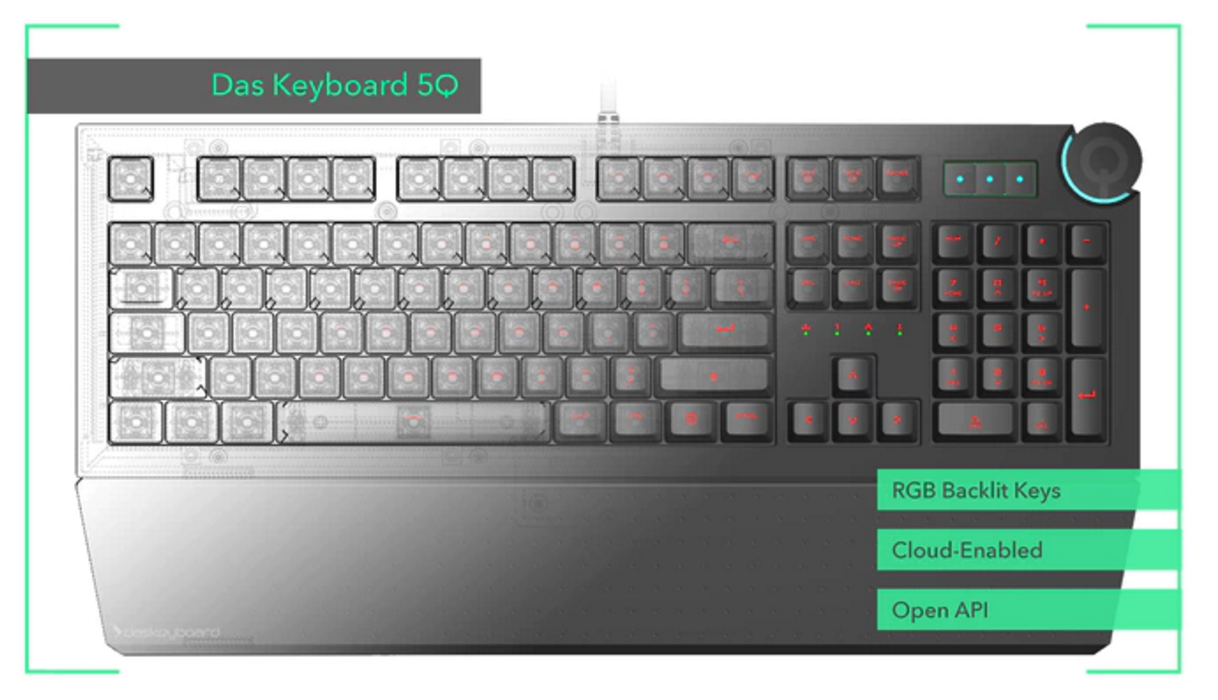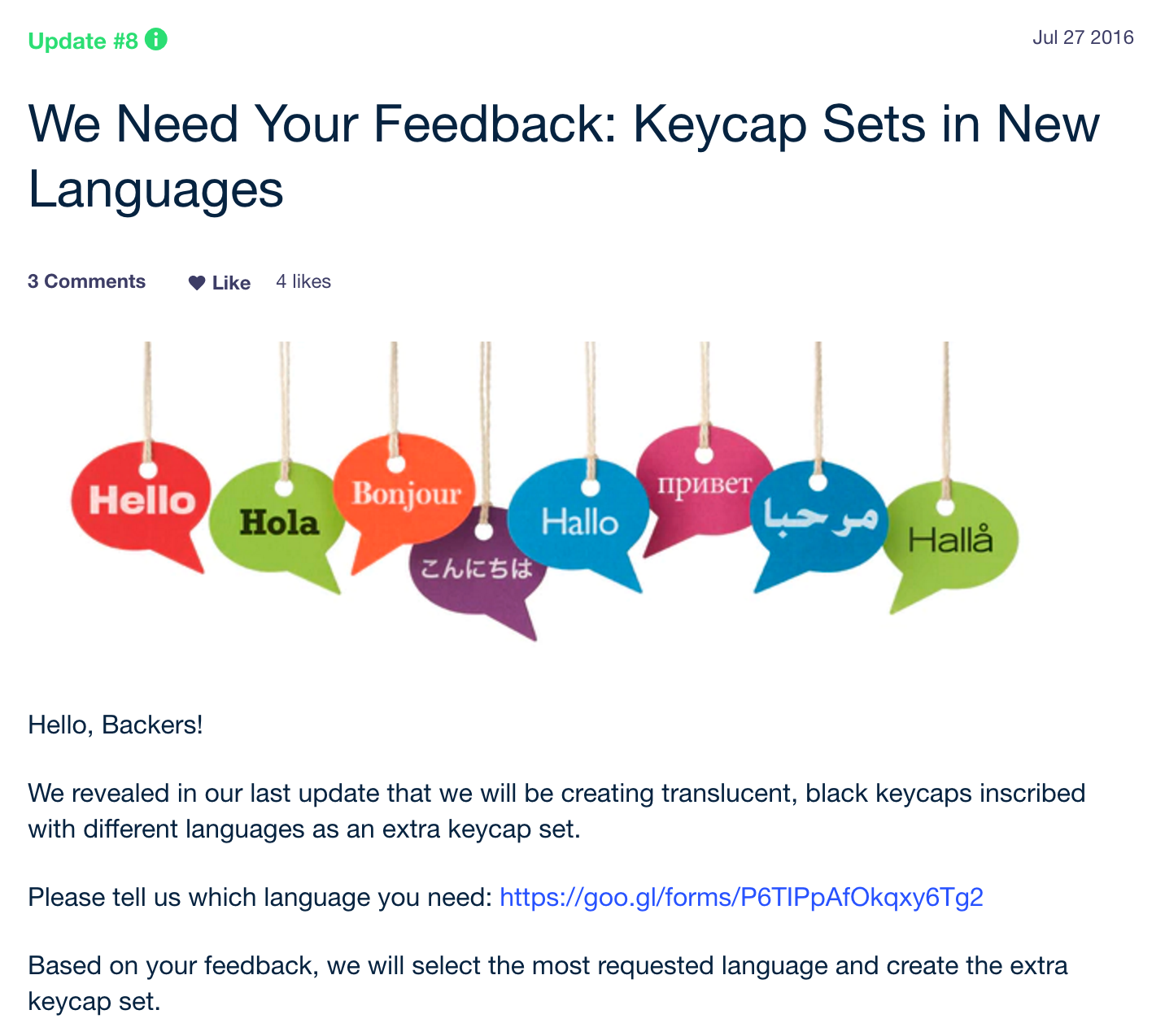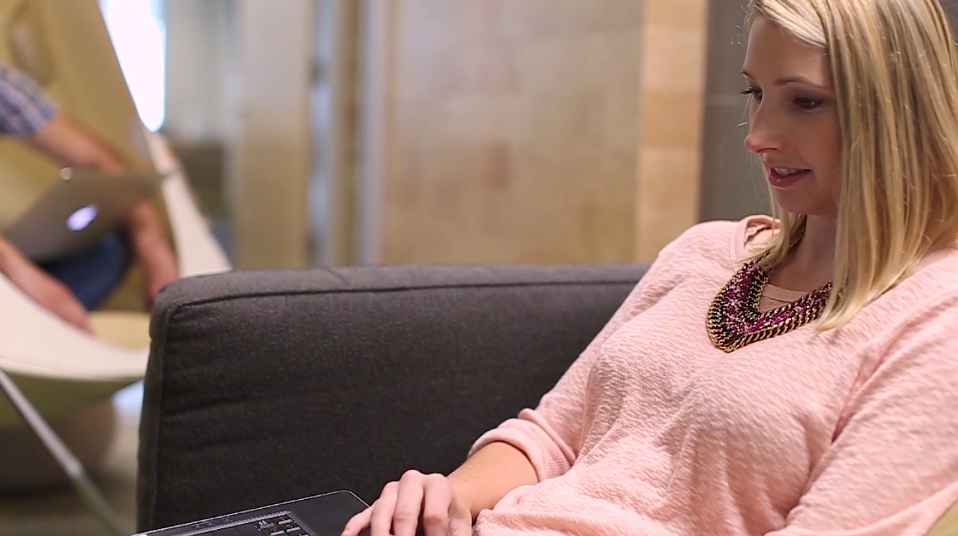A Kickstarter Case Study with Das Keyboard
A decade ago, Das Keyboard made a big splash in their industry when they released a completely blank keyboard, which was an instant hit with the ‘übergeeks.’ So they have some experience with ideas that catch fire, and have built quite a fan base. But their latest project, a cloud-controlled keyboard called the Das Keyboard 5Q, was a big idea that went beyond what the company could develop in-house.
So, as many companies with big ideas are increasingly considering, they turned to Kickstarter to see if their fan base was willing to help make their dream a reality.
In short, they were willing.
Das Keyboard raised almost six times their goal, exceeding their initial target of $100,000 in 7 hours, and ending with a grand total of $580,902 from 3,475 backers. For a company that prides themselves in being badass, their Kickstarter lived up to their brand. Here are five ways you can crowdfund like a badass.
1. Make Sure it’s Good
Let’s get the obvious out of the way first: you need an idea people will think is worth funding. But what makes the product right for crowdfunding, and how do you prove it?
If you try to launch a campaign with a completely untested concept, the funding will likely fall short. And if your product seems like something that could just as easily be funded in-house, people are going to be far less willing to pledge. So the ideal crowdfunded product should aim for the sweet spot between market-proven and ground-breaking.
But they are still a small, privately-owned company, which meant their vision of mass producing a cloud-controlled keyboard would require external funding.
DasKeyboard created early prototypes of both the software and hardware components of the keyboard before making an ask for public financing. This initial, smaller investment in a proof-of-concept paid off because it strengthened the product and their messaging before they brought it to Kickstarter.
This doesn’t mean you need a fully-functional prototype to test an idea’s viability, but it does mean you need something to prove to yourself, your company, and your potential backers that the idea has legs. This is why Kickstarter encourages showing prototypes, even if they are incomplete. Financial backing is more likely if you can show that you are serious about the concept and have already moved beyond sketches on the whiteboard.
2. Make Marketing Content
Every crowdfunding effort needs a campaign video. It’s the simplest way to make your pitch, and is the most shareable on social. It also allows you to introduce and control the tone that your campaign, brand, and product will have.
You can go with any range of styles, from handheld smartphone video to fully-produced commercial. The style you choose really depends on who you are and what you’re asking for: If you’re an indie screenwriter with $0 in the bank, it makes sense to shoot an elevator pitch on your phone and get it online. If, however, you’re an established company hoping to fund a new product, your customers/backers might expect a bit more of an investment in your pitch video.
This can present a challenge because you are effectively making a product video for a product that does not yet exist.
One simple, low-cost crowdfund method, which many companies have used successfully, is to interview the founders talking about their company, their vision for the project, and why the audience should care about it. This is a great way to sell the idea, especially when you don’t yet have a tangible product to show. The downside is it focuses on the people, not the product. And when you’re asking for funding, especially a lot of it, showing is better than telling.
Because Das Keyboard already had a semi-functional prototype, we at Sparksight were able to combine live action b-roll with narration and animation to give a sense of what the keyboard will be capable of. We could have done the entire video with talking heads explaining these features, but found that the keyboard’s functionality and what this meant for the future of keyboards was too much to just be ‘talked about.’ We needed to show not only how the keyboard would behave but specific use cases that would get backers’ minds racing about what other capabilities there might be. The result was this video, which headlined Das Keyboard’s campaign:
So once you’ve got a pitch video, you’re done, right?
Nope.
A solid campaign doesn’t just stop creating content after the video is ready. It adds credibility to your campaign to create additional content that goes on the campaign page and as well as content that can be posted on social throughout the campaign. This could be CAD drawings or sketches, previews of new design features, or data charts that help make the pitch for why people should support you.
We worked with Das Keyboard to design graphics for the main campaign page that visually complimented the campaign video.
Das Keyboard also used clips and even created animated GIFs from their pitch video content to post to social. This extra content helps keep the campaign fresh with both backers and potential backers, which leads us to one of the most important things you can do to have a successful campaign…
3. Plan Ahead
A crowdfunding campaign is like a marketing campaign, but tougher because you’re marketing a product that does not yet exist. And just like you wouldn’t launch a marketing campaign without a plan, you should not start your Kickstarter without having a clear plan for how you will run it.
Das Keyboard’s campaign didn’t get funded in 7 hours by accident. A good crowdfunding campaign starts months before the launch date. As you determine what content in addition to a pitch video you will want to have, you need to allot when and where that content will be released. Again, some of it may go on the main campaign page, but a lot of what you prepare is for weeks 2 and 3, when you might experience a lull in funding.
Once someone is backing you, they are more likely to keep an eye on your social platforms for updates (which we’ll get to in a minute). But that means part of your audience doesn’t want to see only requests for more backers.
You can plan for this expanded audience of advocates by lining up relevant content that isn’t directly tied to your campaign in advance. If you know that a large portion of your backers are gamers (as Das Keyboard does), you may want to set up alerts for gamer news, or follow big gaming Twitter accounts in case something interesting comes through that you could relate to your industry as well.
Additionally, you can pre-source humorous gifs, vines, or graphics that you can tweet throughout the campaign, so you aren’t scrambling to find that perfect reaction gif when your goal is reached.
Planning to crowdfund just as you would a product roll-out will sufficiently prepare you for the day-to-day of the campaign, but there is one other way you need to plan ahead that is very specific to crowdfunding: Rewards.
You have to strategize what you will offer, to whom, and for how much. A big mistake of campaigns is to offer superfluous tangible rewards, like T-shirts, without appropriately considering the costs to design, print, package, and ship them. Keep the tangible extras to a minimum, and instead focus on valuable upgrades backers can get by spending just a little more.
Das Keyboard’s higher level pledgers were offered early access to the development kit, so they could start tinkering with the software and customize it before anyone else. This is an ideal type of upgrade: intangible, but valuable for funders.
4. Engage Your Community
The core of a strong crowdfunding campaign is engaging your community. This means watching social, reading comments, answering questions, and updating backers. These earliest adopters to your product rightly feel they deserve to be kept up to date.
This doesn’t mean telling your backers every time you get a new pledge, but it does mean keeping them updated when you make a reach larger goals, make changes to the design, or add features that might appeal to them.
Das Keyboard leveraged their community with a survey that helped determine what foreign language keys should be developed, which both reinvigorates backers and also gives them a voice in how the product takes shape. And this is probably the most important thing to take away when it comes to crowdfunding a project…
5. Be Flexible
To crowdfund is basically to conduct Crowd R&D. Backers are pledging their support not only because they believe in you and/or your product, but because they want to be part of the process. This means simply updating them on changes you make isn’t enough… you need to be willing to make changes based on what your backers want to see.
So don’t just engage your community, listen to them. Otherwise you’re not crowdfunding, you’re just offering pre-orders. Letting the community tell you what they want is the ideal scenario: you have the Demand asking for a very specific Supply, and they’ve already put their money down. So the more you can listen, the better
This doesn’t mean that you should be so flexible that your campaign to create a USB-powered coffee pot should become a USB-powered self-driving car… but it does mean you need to know where you have flexibility and encourage input from your backers to make the best product you can for the people who’ve already purchased it. If your manufacturing process will be too rigid to accommodate some of the most popular requests from customers, than you may need to consider an alternative to crowdfunding.
Das Keyboard built a few of their customer-requested hardware upgrades into their campaign. The first, an aluminum panel, was announced after being their most-requested upgrade. They went on to offer a “mystery upgrade” that would only be released if they achieved their stretch goal of $500,000. This upgrade was based on feedback and requests they received from their backers, so it was a great added value to the people who had already backed the project, especially if the mystery of the upgrade enticed them to socialize the campaign and generate moreIn reality, they probably decided to make this upgrade as soon as they saw it was a popular request, but building it into their stretch goal campaign was a nice way to roll out an upgrade that the majority of their backers had asked for, and showed that they were willing to listen.
Come up with a good idea, prove it’s good with good content and a good plan, ask for feedback from your backers, and listen to what they say.
Do you have any other great tips for Kickstarters? Let us know in the comments below!





